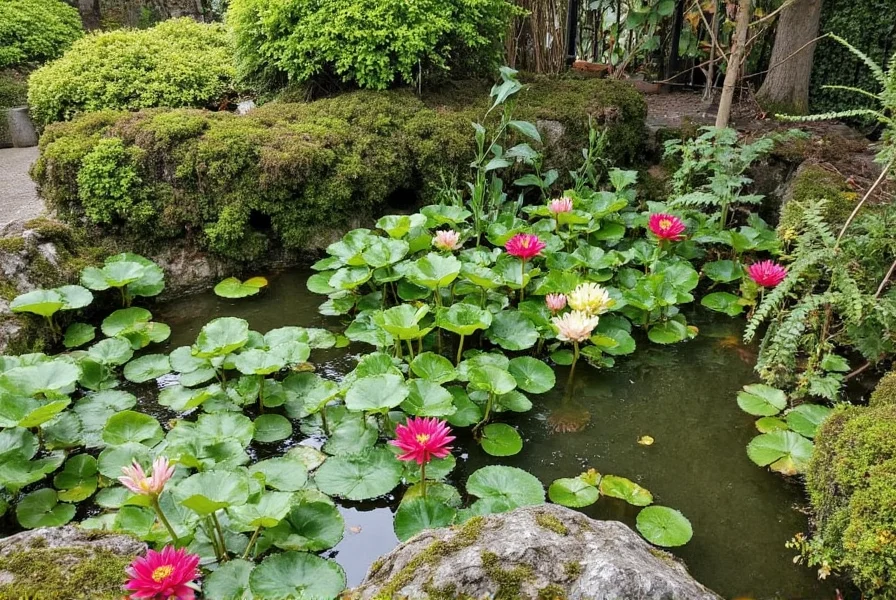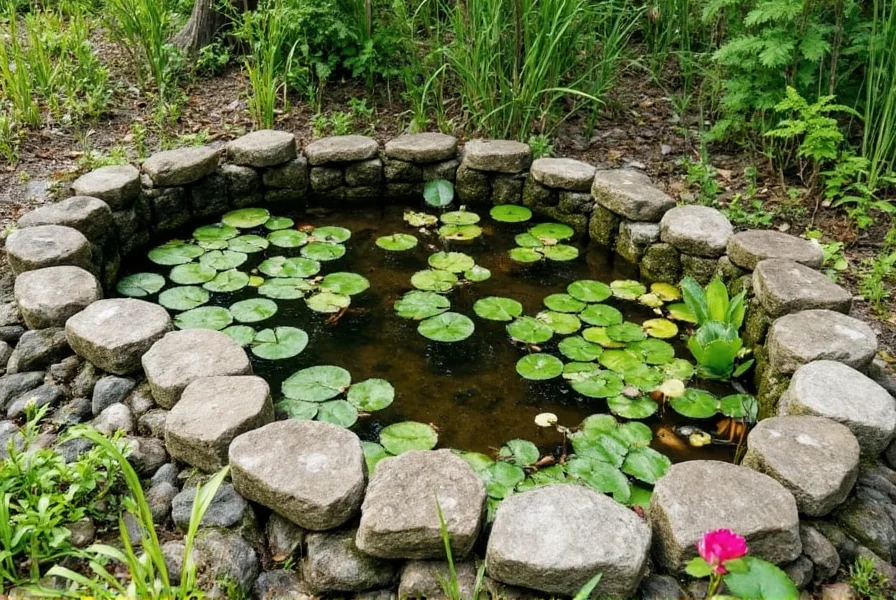Creating a successful ginger pond requires understanding which ginger varieties flourish near water features and how to integrate them into your landscape design. Unlike typical pond plants that grow directly in water, most ginger species prefer the damp soil surrounding ponds rather than submerged conditions. This guide explores the best practices for incorporating ginger plants into your water garden while maintaining healthy growth and visual appeal.
What Makes a Pond Suitable for Ginger Plants
Ginger plants (Zingiberaceae family) generally prefer warm, humid environments with rich, well-draining soil that remains consistently moist but not waterlogged. While they don't grow directly in water like water lilies, many ginger varieties thrive in the microclimate created by pond edges where humidity remains high and soil moisture is consistent.

Top Ginger Varieties for Pond Environments
Not all ginger species work well near water features. The following varieties demonstrate exceptional adaptability to the moist conditions around ponds:
| Ginger Variety | Height Range | Light Requirements | Special Features |
|---|---|---|---|
| Butterfly Ginger (Hedychium) | 3-6 feet | Partial shade | Fragrant white flowers, tropical appearance |
| Shell Ginger (Alpinia zerumbet) | 6-12 feet | Partial to full shade | Variegated leaves, ornamental value |
| Hidden Ginger (Curcuma) | 1-3 feet | Partial shade | Colorful bracts, compact size |
| Japanese Ginger (Zingiber mioga) | 2-3 feet | Partial shade | Cold-hardy, edible shoots |
Designing Your Ginger Pond Layout
When planning your ginger pond, consider these design elements for optimal growth and visual impact:
- Zoning by moisture tolerance - Place moisture-loving varieties closest to the water's edge and those needing better drainage slightly further away
- Layered planting - Combine different ginger heights for visual interest while ensuring taller varieties don't shade out smaller ones
- Soil preparation - Amend pond-edge soil with organic matter to improve moisture retention while maintaining drainage
- Seasonal considerations - Position ginger varieties to provide year-round interest as different species bloom at various times
Planting and Care Requirements
Successful ginger pond maintenance requires attention to specific care requirements:
Soil and Planting Conditions
Ginger plants near ponds need soil that remains consistently moist but never waterlogged. The ideal soil composition includes:
- 40% native soil
- 30% compost or well-rotted manure
- 20% perlite for drainage
- 10% peat moss for moisture retention
Plant ginger rhizomes 2-4 inches deep with the growth buds facing upward. Space plants according to their mature size to prevent overcrowding as they establish.
Water Management
While the pond provides ambient moisture, ginger plants still need supplemental watering during dry periods. Monitor soil moisture regularly, especially during establishment. The soil should feel like a wrung-out sponge—moist but not saturated.
Seasonal Care for Ginger Ponds
Ginger plants respond differently to seasonal changes, requiring adjusted care throughout the year:
- Spring - Apply balanced fertilizer as new growth emerges; divide overcrowded clumps
- Summer - Maintain consistent moisture; provide additional shade during extreme heat
- Fall - Reduce watering as growth slows; protect tender varieties from early frosts
- Winter - Apply mulch to protect rhizomes; cut back dead foliage after first frost
Common Challenges and Solutions
Ginger ponds may encounter specific issues that require attention:
Rhizome Rot Prevention
Excess moisture can cause ginger rhizomes to rot. Prevent this by:
- Ensuring proper soil drainage around the pond perimeter
- Avoiding planting ginger directly in standing water
- Monitoring after heavy rains and improving drainage if needed
Pest Management
Aphids and spider mites occasionally affect ginger plants near water features. Control them with:
- Regular spraying with water to dislodge pests
- Introducing beneficial insects like ladybugs
- Using insecticidal soap for severe infestations

Benefits of Ginger in Pond Ecosystems
Incorporating ginger plants around your pond offers multiple advantages:
- Enhanced biodiversity - Ginger flowers attract pollinators like butterflies and hummingbirds
- Erosion control - Ginger root systems help stabilize pond banks
- Seasonal interest - Different ginger varieties provide visual appeal throughout growing seasons
- Natural screening - Taller ginger species create privacy barriers around water features
- Tropical ambiance - The lush foliage creates a resort-like atmosphere in your garden
Creating a Year-Round Ginger Pond Display
For continuous visual interest, combine ginger varieties with different seasonal characteristics:
- Early spring: Japanese ginger emerges with edible shoots
- Mid-summer: Butterfly ginger produces fragrant white flowers
- Late summer: Shell ginger displays showy pink bracts
- Fall: Variegated ginger varieties provide striking foliage contrast
Consider companion planting with other moisture-tolerant species like ferns, hostas, and certain ornamental grasses to create a layered, naturalistic pond edge that supports your ginger plants while adding diversity to your water garden.
Frequently Asked Questions
Can I grow regular culinary ginger in a pond environment?
Standard culinary ginger (Zingiber officinale) prefers consistently moist but well-drained soil rather than the saturated conditions near pond edges. While it can grow near ponds in partial shade, it performs better in garden beds with controlled moisture. For pond environments, butterfly ginger or shell ginger varieties offer better adaptation to the humid conditions while providing similar tropical aesthetics.
How close to the water's edge can I plant ginger varieties?
Most ginger varieties should be planted at least 12-18 inches from the water's edge to prevent root saturation. The exact distance depends on your soil type—clay soils require greater distance (18-24 inches) while sandy soils can accommodate closer planting (12 inches). Create a gentle slope from the pond edge to higher ground to ensure proper drainage away from ginger rhizomes.
Do ginger plants help control mosquitoes around ponds?
While ginger plants don't directly repel mosquitoes, they contribute to a healthy pond ecosystem that supports natural mosquito predators. The dense foliage provides habitat for dragonflies and other beneficial insects that feed on mosquitoes. For effective mosquito control, combine ginger plantings with other strategies like adding mosquito-eating fish, maintaining water circulation, and eliminating standing water in containers around the pond area.
Which ginger varieties work best in colder climates with seasonal ponds?
For colder climates (zones 6-7), Japanese ginger (Zingiber mioga) offers the best cold tolerance, surviving temperatures down to 0°F with proper mulching. Butterfly ginger can also work in zone 7 with winter protection. In these climates, treat ginger as semi-evergreen perennials—apply 4-6 inches of mulch after the first frost and remove it gradually in spring. Consider growing more tender varieties in containers that can be moved indoors during winter months.
How do I prevent ginger plants from taking over my pond area?
To control ginger spread in pond areas, install physical barriers 18-24 inches deep around planting zones, divide plants every 2-3 years in spring, and remove unwanted rhizomes during division. Choose clumping varieties like Hidden Ginger instead of running types, and maintain a 6-12 inch maintenance strip between your ginger plantings and the pond edge to prevent encroachment. Regular monitoring and timely intervention will keep your ginger pond display well-managed.










 浙公网安备
33010002000092号
浙公网安备
33010002000092号 浙B2-20120091-4
浙B2-20120091-4